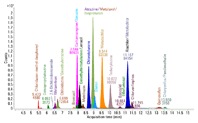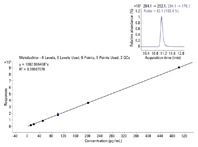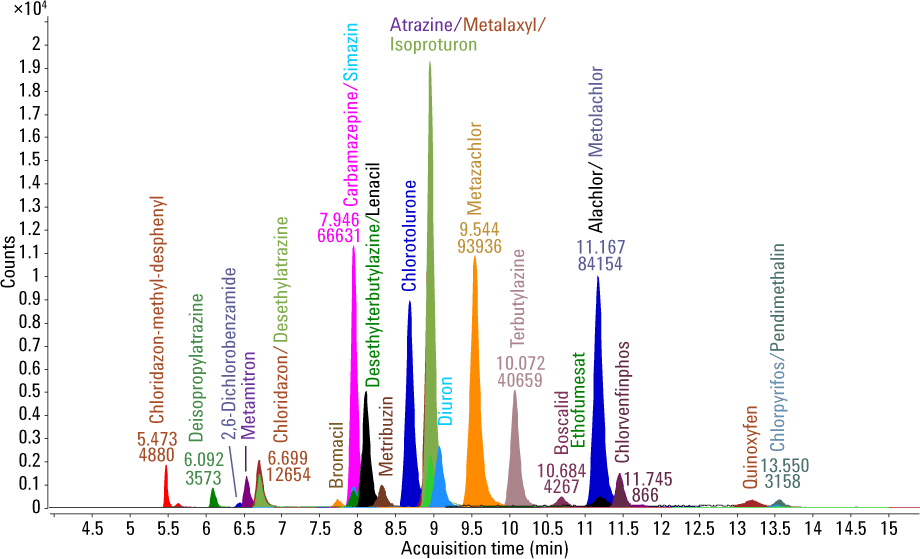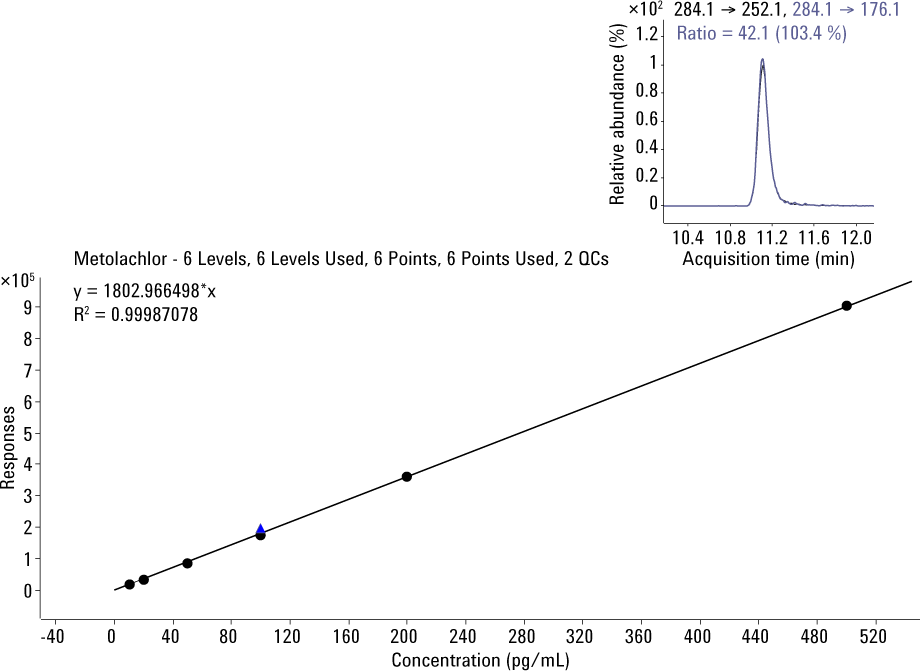Access Agilent eNewsletter, October 2013
>> Update My Profile | Subscribe to Access Agilent | Article Directory

Quantify trace-level compounds in water with the Agilent 1200 Infinity Series Online SPE Solutions
By Anneke Muehlebach
Agilent Product Manager, Analytical HPLC
Solid phase extraction (SPE) is a powerful technique for sample preparation and analyte enrichment, but it usually requires time-consuming manual offline processing steps. Thus, efficiency and throughput increases with online SPE/LC/MS/MS. Whether you use SPE to remove matrix components or to enrich the compound of interest to reduce detection limits for applications such as trace-level water analysis, the modular design of the Agilent 1200 Infinity Series Online SPE Solution gives you the flexibility to tailor your system to match virtually any analytical challenge.

Figure 1. The modular design of the Agilent 1200 Infinity Series Online SPE Solution gives you the flexibility to tailor your system to your analysis.
 Enlarge
Enlarge
Figure 2. Dynamic multiple reaction monitoring (DMRM) chromatogram of a calibration standard in tap water with a concentration of 50 ng/L for 27 herbicides.
 Enlarge
Enlarge
Figure 3. Calibration curve of metolachlor with a six-level calibration (10 to 500 ng/L). The triangle symbolizes the quality control sample at a concentration of 100 ng/L.
Enrichment with online SPE enables trace-level (low ng/L) analyses with the Agilent 6460 Triple Quadrupole LC/MS System. The Agilent Online SPE Solutions are based on the Agilent 1290 Infinity Flexible Cube coupled with an Agilent 6400 Series Triple Quadrupole LC/MS System. The Flexible Cube houses reusable SPE cartridges and up to two valves. Valve heads are easy to mount on the valve drives, thanks to the Agilent 1200 Infinity Series Quick-Change Valves.
A built-in single-piston pump inside the Flexible Cube flushes the sample onto the cartridges and makes a second LC pump unnecessary, which saves cost. The 1290 Infinity Flexible Cube also contains a solvent selection valve for up to three solvents. The result is a neat set-up of the LC stack, with two valves inside the Flexible Cube (Figure 1).
Agilent’s extensive portfolio of valves makes it easy to customize your online SPE system to fit your needs. You can combine these kits with the SPE starter set for applications such as:
- Direct injection
- Multi-SPE
- High volume injection
- Flask sampling
In addition, you can easily include existing LC modules and upgrade online SPE features.
Time-saving analysis of herbicides shows superb linearity and accuracy
To demonstrate the system performance, we recently measured a suite of 27 herbicides in four water samples that included tap water, ground water, and two different surface waters. Figure 2 shows a chromatogram of all compounds.
Figure 3 shows the calibration curve for metolachlor, a nonpolar herbicide with a retention time of 11 minutes. The calibration curve demonstrates excellent linearity, with a correlation coefficient of better than 0.999. The chromatogram shows the overlay of the quantifier and the qualifier trace for spiked surface water. The measurement matches the spiked reference value with a concentration of 50 ng/L.
The automated enrichment process makes it possible to accomplish low detection limits with a routine triple quadrupole MS and to run rapid analyses of water samples without time-consuming sample preparation or offline enrichment with SPE cartridges. You can find details about this application in Agilent publication 5991-2405EN.
Online SPE enrichment of antibiotics allows detection down to 1 ppt
We also demonstrated use of the Agilent 1200 Infinity Series Online SPE Solution for enrichment, separation, and detection of antibiotic residues in trace-level analyses of water samples by HPLC with triple quadrupole MS detection. Table 1 shows the identified optimum fragmentor and collision energy values for the molecular ions of the individual antibiotics, as well as for the quantifier and qualifier ions.
Name |
RT (min) |
Molecular mass |
Molecular ion |
Fragmentor |
Quantifier ion |
CE |
Qualifier ion |
CE |
|---|---|---|---|---|---|---|---|---|
Vancomycin |
10.25 |
1,447.43 |
724.80 |
120 |
144.0 |
12 |
100.1 |
40 |
Trimethoprim |
11.37 |
290.13 |
291.14 |
150 |
230.1 |
20 |
123.0 |
24 |
Ormetoprim |
11.88 |
274.14 |
275.15 |
150 |
259.1 |
24 |
123.0 123.0 |
|
Cefotaxime |
12.27 |
455.05 |
456.06 |
110 |
125.0 |
52 |
126.0 |
44 |
Tetracycline |
12.44 |
444.15 |
445.16 |
90 |
410.1 |
16 |
154.0 |
28 |
Ornidazole |
13.01 |
219.04 |
220.04 |
100 |
128.0 |
12 |
82.1 |
32 |
Chlorotetracycline |
14.31 |
478.11 |
479.12 |
125 |
444.1 |
20 |
462.1 |
12 |
Sulfamethoxazole |
15.11 |
253.95 |
254.06 |
95 |
92.1 |
28 |
108.0 |
20 |
Oxolinic acid |
16.08 |
261.06 |
262.07 |
85 |
244.0 |
16 |
216.0 |
28 |
Erythromycin |
16.79 |
733.46 |
734.50 |
120 |
158.1 |
32 |
576.0 |
16 |
Tylosin |
17.55 |
915.51 |
916.52 |
155 |
174.1 |
40 |
772.4 |
28 |
Nalidixic acid |
18.19 |
232.08 |
233.09 |
85 |
215.1 |
8 |
187.0 |
24 |
Flumequine |
18.66 |
261.08 |
262.08 |
75 |
244.0 |
12 |
202.0 |
32 |
The molecular ion of vancomycin is [M+2H]2+; all others are [M+H]+.
Fragmentor = voltage (V)
RT = retention time (min)
CE = collision energy (eV)
Table 1. MRM and DMRM MS method shows the optimum fragmentor and collision energy values for the individual antibiotics. Also shown are molecular, quantifier, and qualifier ions.
The efficient online SPE trapping process allowed detection in drinking water samples with high precision and accuracy. With this analysis, we demonstrated limits of quantitation (LOQs) as low as 1 ppt. The methodology showed high sample-to-sample reproducibility, with area deviations of less than 6%. See Agilent publication 5991-2335EN for many more details.
Gain sensitivity and productivity
These examples show that online SPE delivers sensitive, automated analyses of trace organic compounds in water. If you need an efficient sample preparation process and the productivity gains of the highly integrated Agilent 1200 Infinity Series Online SPE Solutions, watch this video to explore more.
>> Update My Profile | Subscribe to Access Agilent | Article Directory

